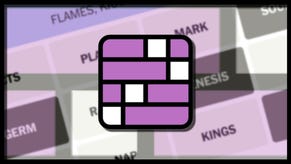How to change your Hell difficulty level in Diablo Immortal and what each level does
Climb through all four levels of Hell
Trying to figure out how to change the difficulty in Diablo Immortal? Despite the shift to an MMO-like structure, Diablo Immortal carries over some aspects of the difficulty level system from previous Diablo titles. However, you can’t change the difficulty in Diablo Immortal straight away. Once you do, it is important to understand which difficulty is right for your Paragon level, and how you can benefit from ratcheting it up. This guide will walk you through everything you need to know about Hell levels in Diablo Immortal.
How do you change the difficulty in Diablo Immortal?
Before you can change your Hell difficulty level in Diablo Immortal, you must finish the main story quest and reach level 60. This can take some serious time, especially if you don’t know how to farm XP and push past level gates, so check out our guide to leveling up faster in Diablo Immortal for tips. Once you reach level 60, you can change your difficulty at any time by traveling to Westmarch.
While in Westmarch, open your map and find the skull icon in the top-right. Click on the skull to view all available difficulty levels and their impact on the game. There are four post-game difficulty levels, titled simply Hell I, Hell II, Hell III, and Hell IV. Each difficulty covers a range of Paragon levels. The recommended levels are:
- Hell 1: Paragon levels 1-60
- Hell 2: Paragon levels 30-130
- Hell 3: Paragon levels 90-210
- Hell 4: Paragon levels 160-300
What does Hell difficulty do in Diablo Immortal and when should you raise it?
Now the question is, what is the point of raising the difficulty in Diablo Immortal and when should you do it? Higher Hell levels raise the Combat Rating of monsters in all activities, including overworld zones, Dungeons, and Rifts. You can visit your inventory stat sheet to check your own Combat Rating, which is an aggregate of stats that determines overall character power, and see how you stack up. The Combat Ratings for each difficulty level are:
- Hell 1: 390 Monster Combat Rating
- Hell 2: 1190 Monster Combat Rating
- Hell 3: 2150 Monster Combat Rating
- Hell 4: 3270 Monster Combat Rating
You should raise your Hell difficulty when your own Combat Rating is high enough to handle these levels. Higher Hell difficulties have improved rewards, adding Set items to Dungeon drop pools and increasing the global drop chance of Legendary Gear (but not Legendary Gems). Gear drops in higher difficulties can also roll higher-tier stat modifiers, contributing more to your Combat Rating and helping you climb towards the next Hell level. So, you should typically play at the highest Hell difficulty your character can handle to maximize your loot.
That’s everything there is to know about Hell difficulties in Diablo Immortal! The system is simpler than it initially sounds, and provides guide posts for your progress through the endgame. If you’re still struggling with character choices, check out our Diablo Immortal tier list for some help! We’ve also broken down Elder Rifts and the Legendary Gems system in detail to help you allocate your time.















